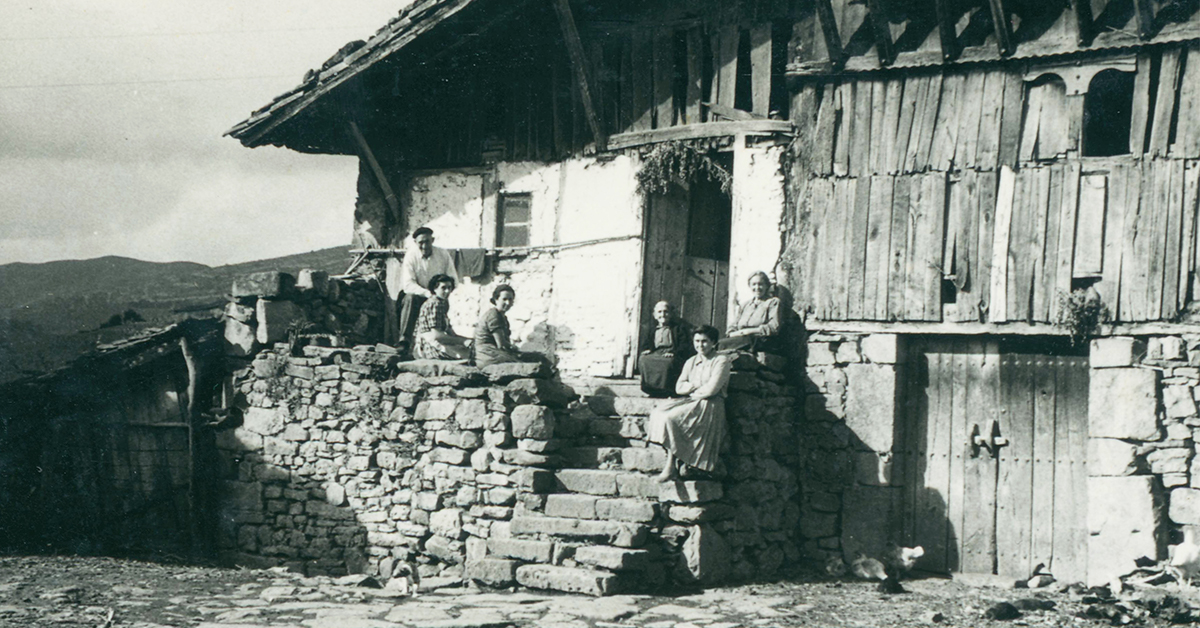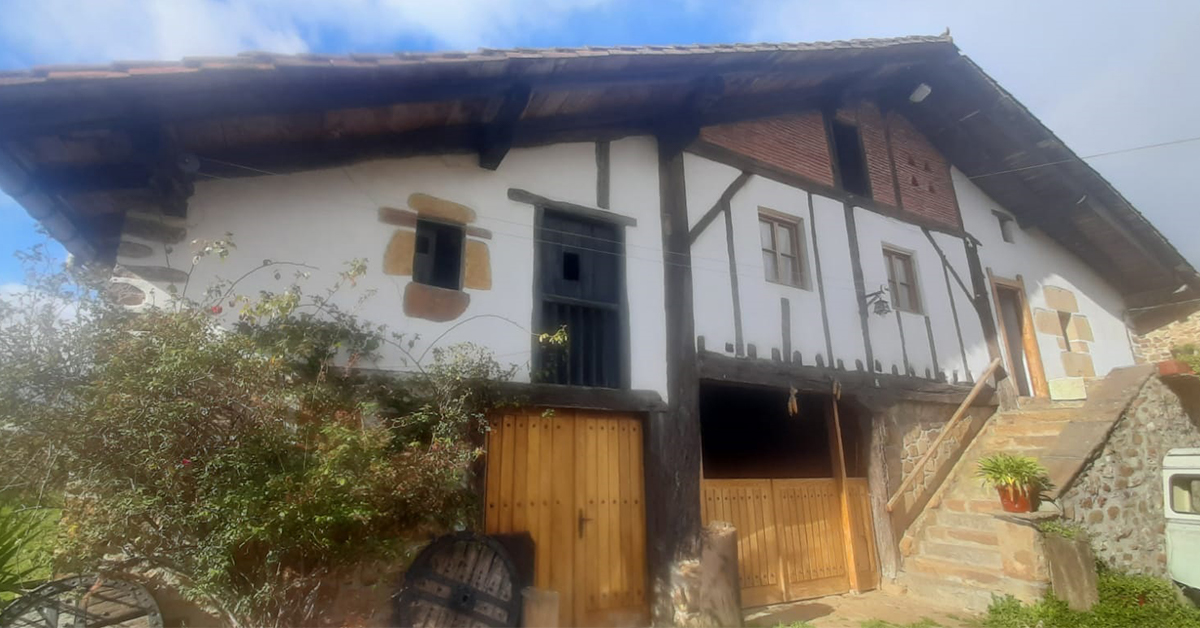Basque ethnography at a glance

Munekogoikoa Farmhouse (Urigoiti, Orozko). Photo credit: Javier Perea. Labayru Fundazioa Photographic Archive.
My grandmother used to enjoy the sun on the balcony. If truth be told, our farmhouse is cold in summer, let alone in winter.
The balcony would not just be a nice place to sit on though. All kinds of small tasks were waiting to be done while sitting out there, as could not have been otherwise. Those among us who live or have lived on a farmstead know only too well that there is always something to do, even while resting.
There maize ears and beans were dried and shelled. There freshly harvested hazelnuts were separated and cleaned. There seasonal tomatoes were peeled and chopped, then cooked and bottled. And on feast days, finally leaving work aside, whenever guests or neighbours dropped in, there they were welcomed and there they would have a chat and an appetizer. The balcony would therefore be taken great care of and decorated with flowers.
The so-called andaputxua is part and parcel of the house, and its name ever so familiar to us. Having said that, I am well aware that the word is completely unknown for speakers of Basque variants spoken in other regions of Bizkaia, because not every farmhouse is alike, and not all of them feature such a balcony, of course.

Udiaga Farmhouse (Udiaga, Orozko). Photo credit: Itziar Rotaetxe. Labayru Fundazioa Photographic Archive.
According to Xabier Kintana, in his book entitled Herri hizkerako lexikoaren altxorretik[1], the term andaputxu was collected in the valley of Orozko in 1996 from Frantziska San Sebastian Uribasterra, coincidentally our grandmother, when she was 96 years old. By its form and meaning, it could be a loanword from Spanish and come from the noun antepecho. However, depending on phonetic evolution, and should it not be of recent coinage, it could alternatively derive from: andamio>andamu>andapu + the diminutive –txu.
This type of balcony receives the same name in nearby Zeberio. And some houses in surrounding villages of Arratia also have it. These peculiar balconies are likewise found in other locations of Bizkaia, such as Nabarniz, Ajuria, Ajangiz, Trapagaran or Karrantza, but not very commonly.
An exterior staircase allows access to the inside of the building. Facing the sun, the stairs are attached to the front facade on one side. On the other, a wide stone wall, barely a meter high, provides protection and good support to climb up and down. The landing serves as balcony and main entrance to our dear home. Stairs and balcony are made of large stone slabs, though similar constructions which are built of wood instead of stone are not by any means rare. And it is the small yet gorgeous balcony that we actually call andaputxua.
Itziar Rotaetxe – Popular Cultural Heritage Department – Labayru Fundazioa
Translated by Jaione Bilbao – Ethnography Department – Labayru Fundazioa
Reference for further information: House and Family, part of the Ethnographic Atlas of the Basque Country collection.
[1] Xabier Kintana. Herri hizkerako lexikoaren altxorretik [From the treasure trove of the popular speech lexicon], Iker 10, Euskaltzaindia, Bilbao, 1997.

